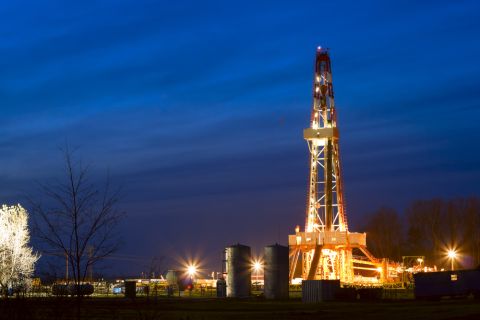Offshore oil services providers stand to gain as oil companies increase approvals for new projects, but the activity boom raises risks of cost overruns and could deter future spending, researcher Rystad Energy said.
A rush to accelerate projects, especially those involving tailor-made designs, increases the uncertainty of their final costs, typically 20% above or below the initial estimate.
“For offshore operators, that means the expected variation for projects to be sanctioned during the period from 2019 to 2023 could be as high as $220 billion,” the research firm said.
It expects over $100 billion in new offshore field projects around the world to be sanctioned on average per year in 2019-2023. In 2015-18, the average was $50 billion per year.
Rystad added that the performance of projects in relation to initial cost estimates has historically influenced operators when deciding on subsequent project sanctioning.
“Even if oil prices stay above $60 per barrel over the next five years, offshore sanctioning could slow down due to project performance,” Rystad said.
Price deterioration has plagued oilfield service companies such as Aker Solutions and Halliburton as a result of the 2014-2016 oil price crash, with competition still fierce and overcapacity looming.
Prices of offshore services have however started to rise again.
Rystad Energy expects offshore unit prices to rise by 10% to 15% by year-end 2022, with the subsea segment in pole position after the industry reduced capacity in some particularly labor-intensive segments during the downturn.
From 2015, fewer offshore projects were approved and the scope of projects shrunk, leading to lower equipment sales.
The average weight of the top part of the platform at oil installations on order came down dramatically following the crash, and topside equipment unit prices have dropped nearly 20% since 2014, Rystad Energy research showed.
“Subsea probably has some of the strongest growth, so we are pretty bullish on subsea activity picking up, whereas [the outlook for] other segments such as maintenance and operational support is pretty flat,” Matthew Fitzsimmons, vice president of Rystad Energy’s Oilfield Service Research division told Reuters.
Offshore service prices are lagging the development of the U.S. onshore industry, where the boom in shale activity has attracted resources.
“I think U.S. shale is very strong, but that being said it is also very oversupplied in several segments, and there has been a lot of inflation there to date,” Fitzsimmons said.
“Offshore hasn’t really seen much yet, inflation-wise, so I think that is going to start picking up over the next few years—not to the levels that is was in previous cycles, and I think it will be more paced than previously,” he added.
Recommended Reading
Comstock Continues Wildcatting, Drops Two Legacy Haynesville Rigs
2024-02-15 - The operator is dropping two of five rigs in its legacy East Texas and northwestern Louisiana play and continuing two north of Houston.
CEO: Continental Adds Midland Basin Acreage, Explores Woodford, Barnett
2024-04-11 - Continental Resources is adding leases in Midland and Ector counties, Texas, as the private E&P hunts for drilling locations to explore. Continental is also testing deeper Barnett and Woodford intervals across its Permian footprint, CEO Doug Lawler said in an exclusive interview.
For Sale, Again: Oily Northern Midland’s HighPeak Energy
2024-03-08 - The E&P is looking to hitch a ride on heated, renewed Permian Basin M&A.
Evolution Petroleum Sees Progress on SCOOP/STACK, Chaveroo Operations
2024-03-11 - Evolution expects to participate in future development blocks, holding in aggregate over 70 additional horizontal well locations.
Trio Petroleum to Increase Monterey County Oil Production
2024-04-15 - Trio Petroleum’s HH-1 well in McCool Ranch and the HV-3A well in the Presidents Field collectively produce about 75 bbl/d.





